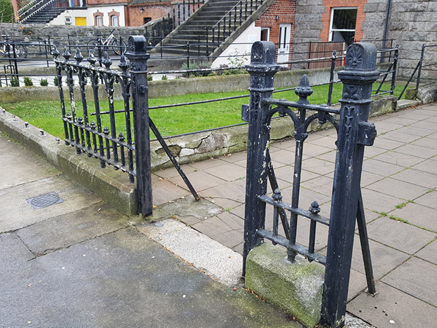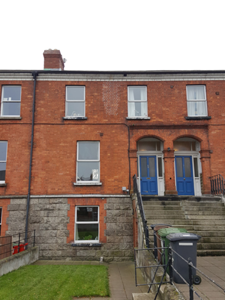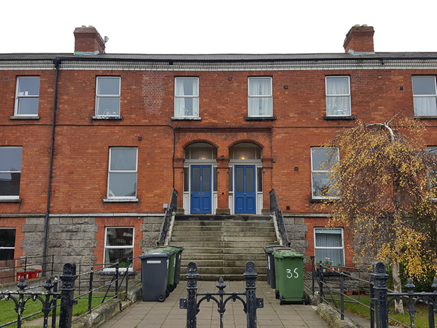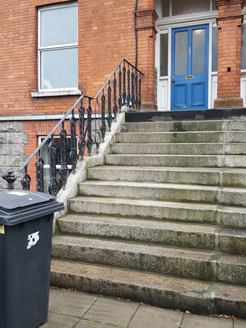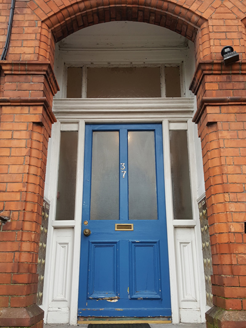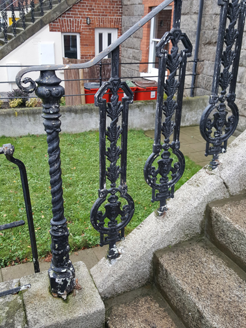Survey Data
Reg No
50120148
Rating
Regional
Categories of Special Interest
Architectural, Artistic
Original Use
House
In Use As
Apartment/flat (converted)
Date
1890 - 1910
Coordinates
318227, 236449
Date Recorded
24/11/2017
Date Updated
--/--/--
Description
Terraced two-bay two-storey former house over raised basement, built c. 1900 as one of twelve, having return to rear (southeast) elevation. Now in use as apartments. M-profile pitched artificial slate roof, having red brick chimneystacks with clay pots to southwest party wall, moulded white brick eaves course, and with pitched roof to return. Red brick walling, laid in Flemish bond, to front elevation on granite plinth course over rusticated granite basement walling, and rendered to rear. Square-headed window openings with granite sills and replacement uPVC frames, having red brick surround to basement window. Segmental-headed entrance opening to deeply recessed porch, having red brick surround incorporating porch to north and having moulded brick pilasters with stop-chamfer detail to arrises, and moulded brick cornice. Square-headed doorway to inner opening, with moulded masonry surround, glazed transom and overlights, half-glazed timber panelled door and sidelights. Plaster coving to porch ceiling. Entrance approached by shared flight of eleven nosed granite steps with half-landing, having decorative cast-iron railings at one side on cut granite plinth wall. Plain cast-iron railings to approach. Garden to front, bounded to street by decorative cast-iron railings and gate set to cast-iron posts on cut granite plinth wall, with granite step to footpath.
Appraisal
This house is part of a terrace that presents an imposing façade to the streetscape, enhanced by the raised basement and rusticated stonework that give added visual weight. Moulded brick details enrich the façade and draw focus to the deeply recessed porch. By sharing the form, fabric and detailing of the terrace and of a further pair to the south, the building contributes to the architectural cohesiveness of the streetscape. It is typical of contemporary well-designed suburban residential housing built around Dublin at the beginning of the twentieth century. The suburban areas north of the city centre were slower to develop than their southern counterparts, with areas such as Clontarf only becoming popular for middle-class residential areas in the latter decades of the nineteenth century.
